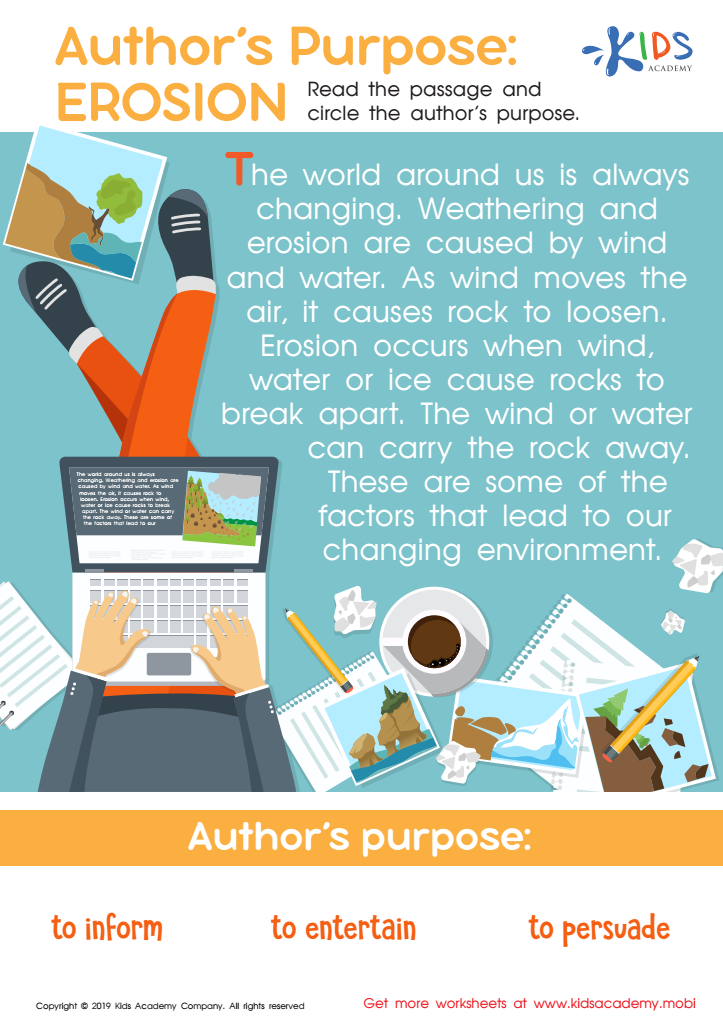Interpret textual information Worksheets for Kids
1 filtered results
-
From - To


Author’s Purpose: Erosion Worksheet
Question/Answer
What does the Interpret textual information skill mean when it comes to Grade 2 Reading Non-Fiction learning?
The "Interpret textual information" skill in Grade 2 Reading Non-Fiction learning involves teaching students how to understand and explain the meaning of information presented in texts. This includes identifying key details, drawing basic inferences, and explaining the main idea or facts found in non-fictional content, such as articles, books, and other educational materials suitable for their reading level.
How to test a Grade 2 student’s Interpret textual information skills?
To test a Grade 2 student's interpret textual information skills, provide them with a short, age-appropriate story or informational text. Ask them comprehension questions requiring them to explain the main idea, identify key details, and make simple inferences. Include questions about characters, settings, or facts to see how well they understand and interpret the text.
What are some effective activities to train students’ Interpret textual information skill when teaching them about Reading Non-Fiction?
To train students in interpreting textual information in non-fiction, engage them in activities like close reading with guided questions, summarizing paragraphs, identifying main ideas and supporting details, analyzing text structure (e.g., cause-effect, problem-solution), comparing and contrasting texts, and discussing the author's purpose and point of view. These exercises promote critical thinking and deeper understanding of non-fiction texts.
 Assign to the classroom
Assign to the classroom












